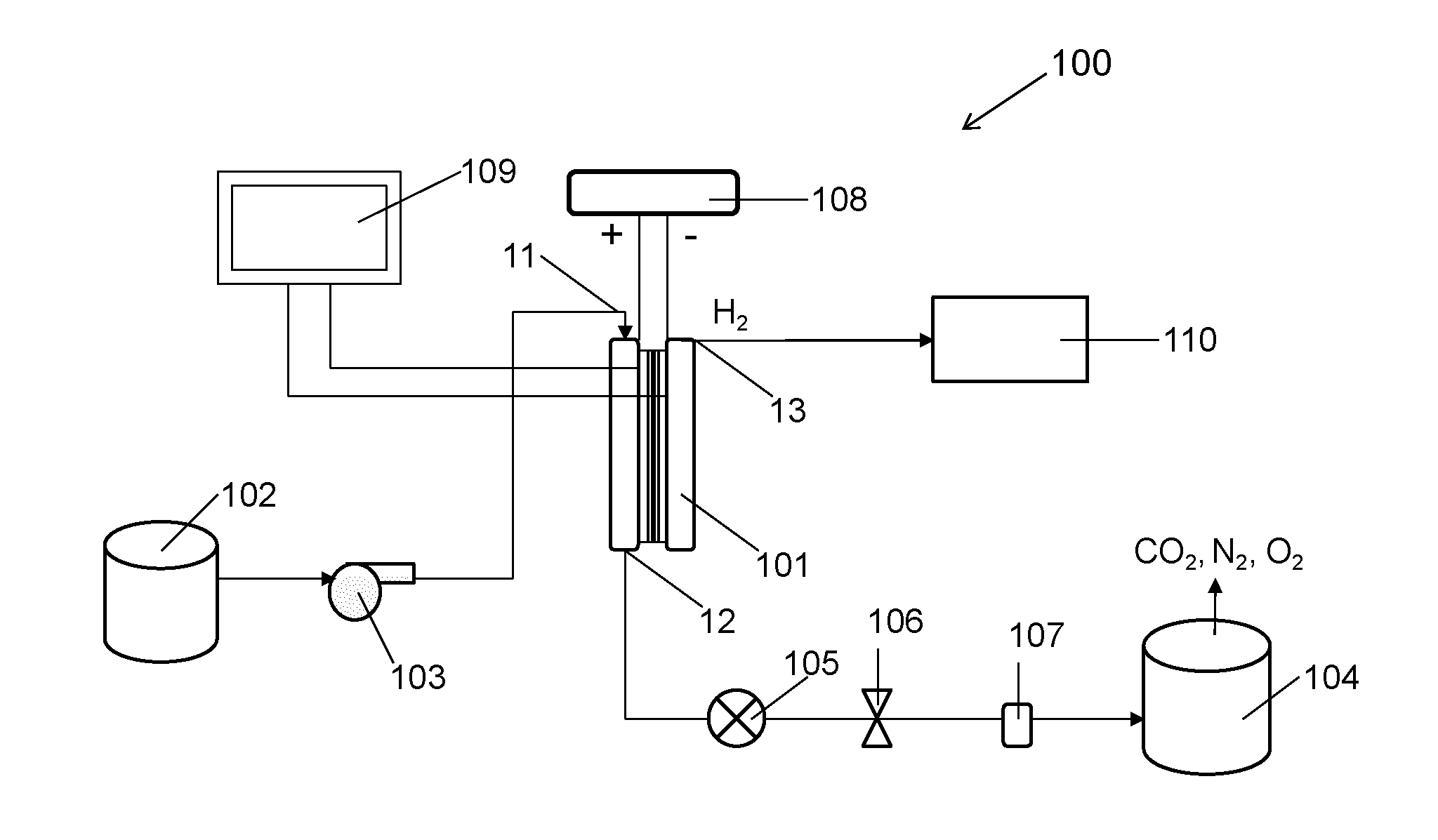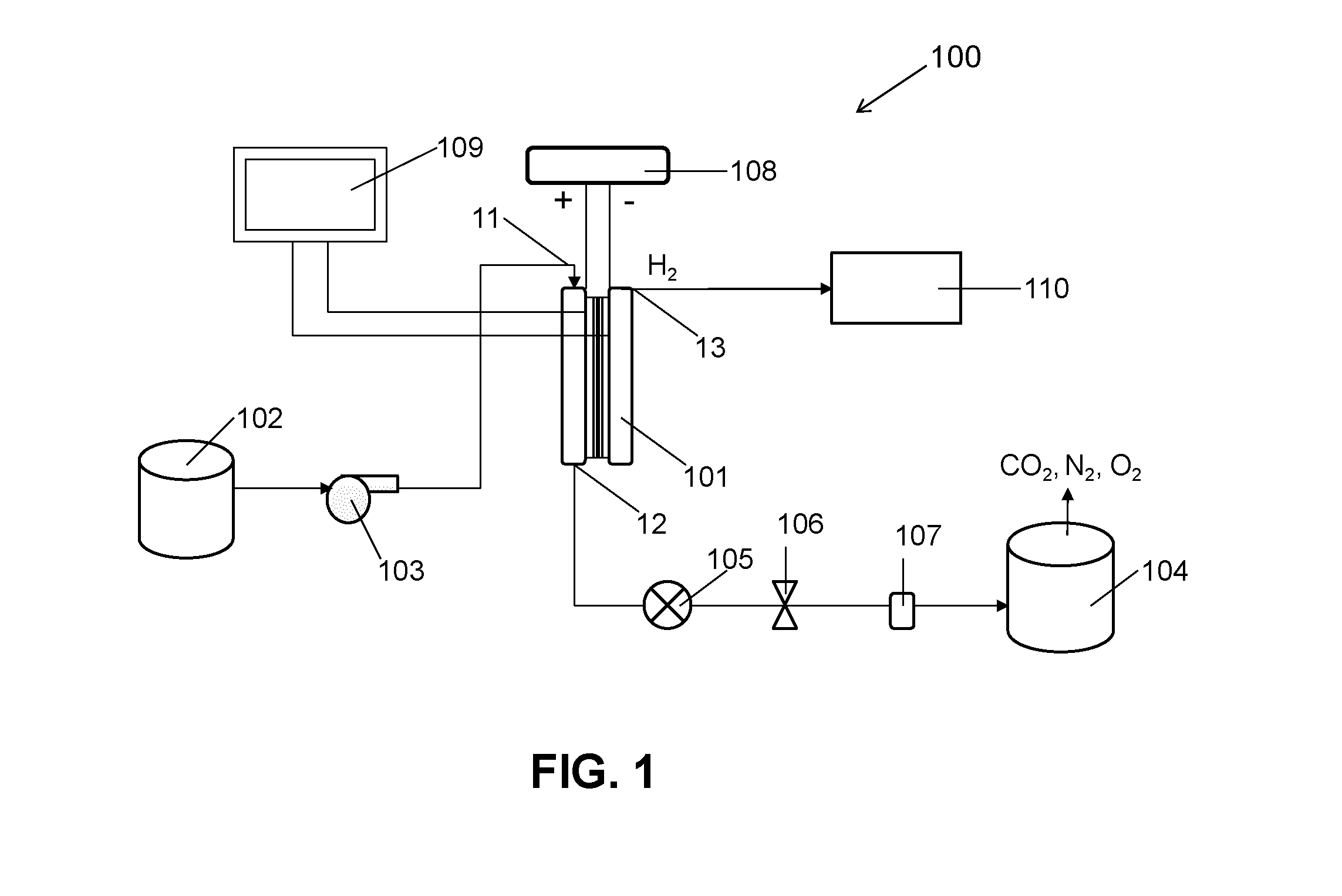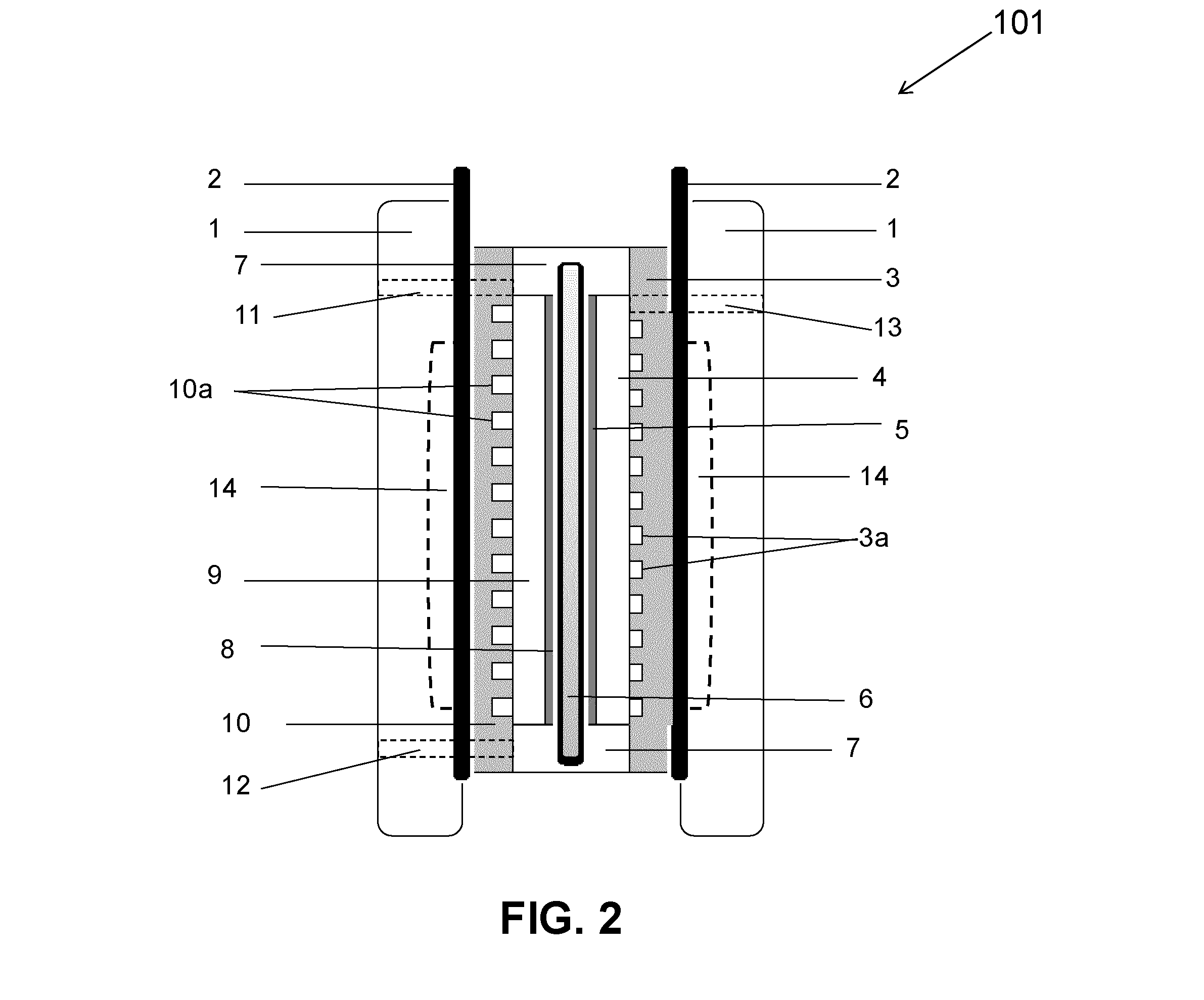Efficient treatment of wastewater using electrochemical cell
a technology of electrochemical cells and wastewater, applied in the direction of water treatment parameter control, electrolytic organic production, instruments, etc., can solve the problems of pollutant degradation and hydrogen gas generation, and achieve energy-efficient treatment, improved efficiency, and low current density
- Summary
- Abstract
- Description
- Claims
- Application Information
AI Technical Summary
Benefits of technology
Problems solved by technology
Method used
Image
Examples
examples
[0076]Numerous laboratory scale solid polymer electrolyte electrolytic cells were constructed as shown generally in FIG. 2 and were used to remove contaminants from wastewater samples via the method of the invention. The contaminants removed were either Acid Blue 29, phenol, acetaminophen, ibuprofen, Kraft mill effluent, or formic acid and these were present in different concentrations as indicated below.
[0077]The test electrolytic cells all employed a single membrane electrode assembly (MEA) comprising fluid and gas distribution layers adjacent to each of the anode and cathode electrodes. The fluid distribution layers were made of various porous carbon papers on which various microporous sublayers had been applied (as indicated below) and niobium mesh with a tungsten gauze sublayer. In some cases, commercially obtained MEAs were used and in other cases, catalyst layers comprising special catalyst compositions were prepared and applied to the fluid distribution layers (again as indi...
PUM
| Property | Measurement | Unit |
|---|---|---|
| voltage | aaaaa | aaaaa |
| current density | aaaaa | aaaaa |
| current density | aaaaa | aaaaa |
Abstract
Description
Claims
Application Information
 Login to View More
Login to View More - R&D
- Intellectual Property
- Life Sciences
- Materials
- Tech Scout
- Unparalleled Data Quality
- Higher Quality Content
- 60% Fewer Hallucinations
Browse by: Latest US Patents, China's latest patents, Technical Efficacy Thesaurus, Application Domain, Technology Topic, Popular Technical Reports.
© 2025 PatSnap. All rights reserved.Legal|Privacy policy|Modern Slavery Act Transparency Statement|Sitemap|About US| Contact US: help@patsnap.com



